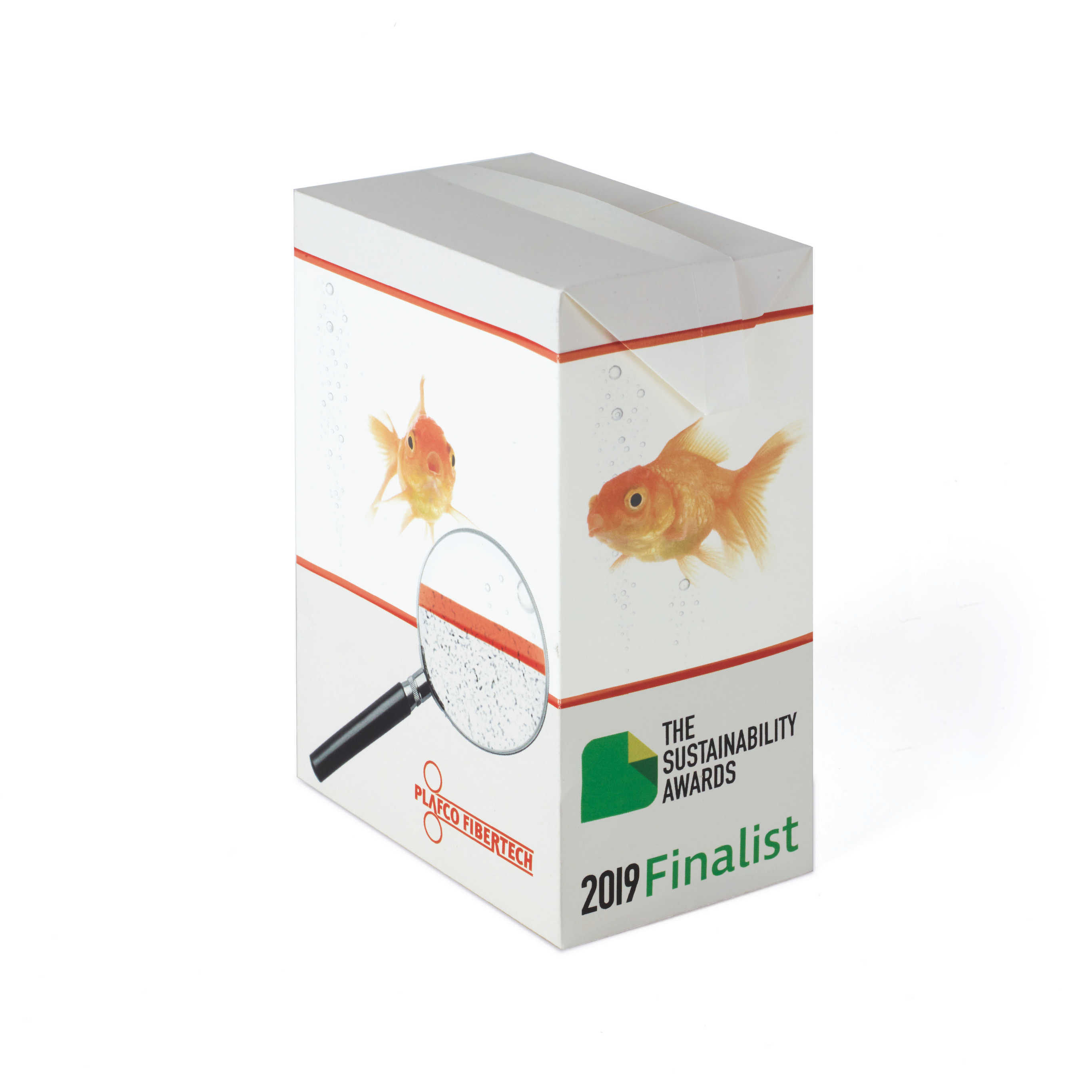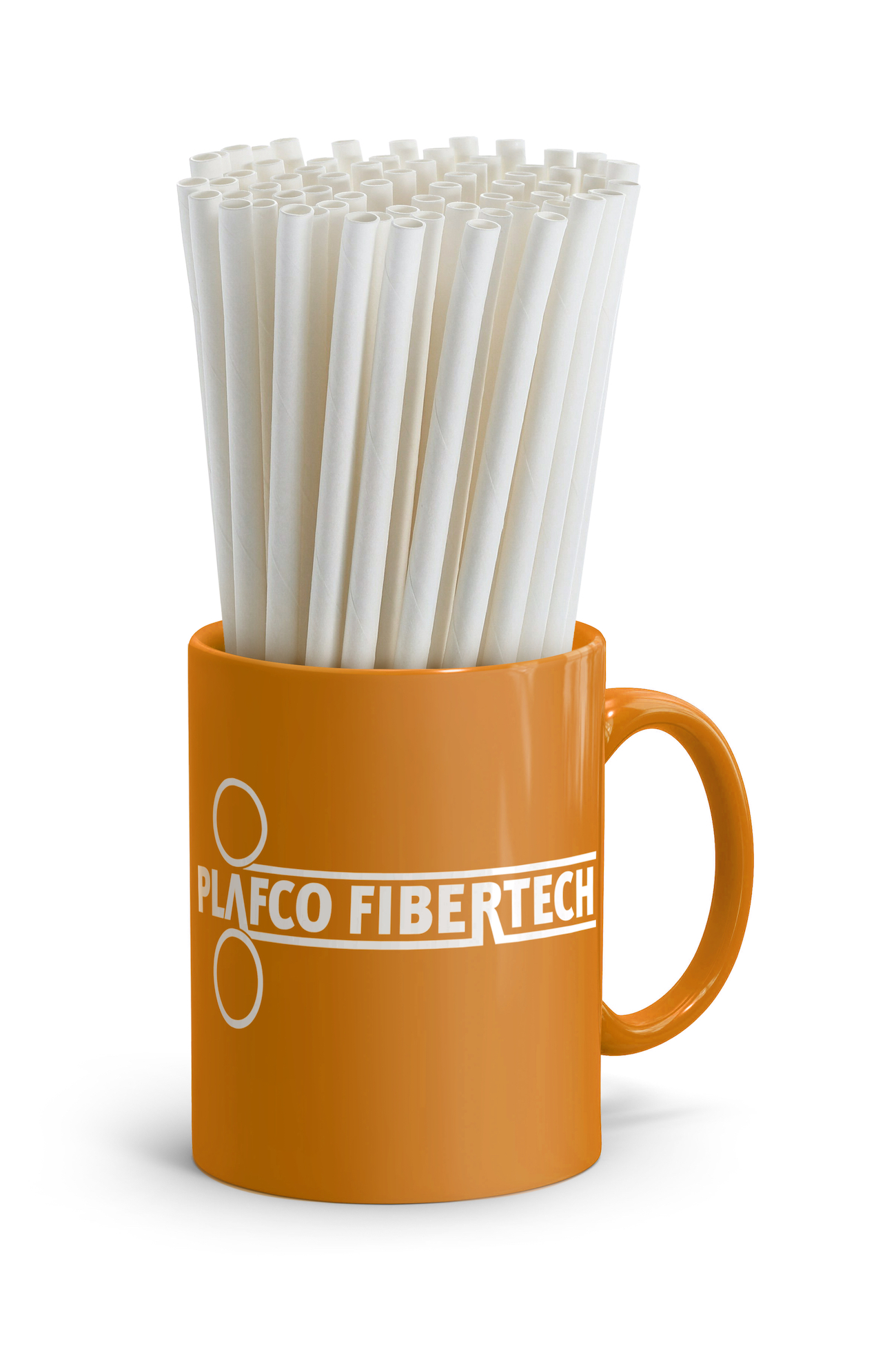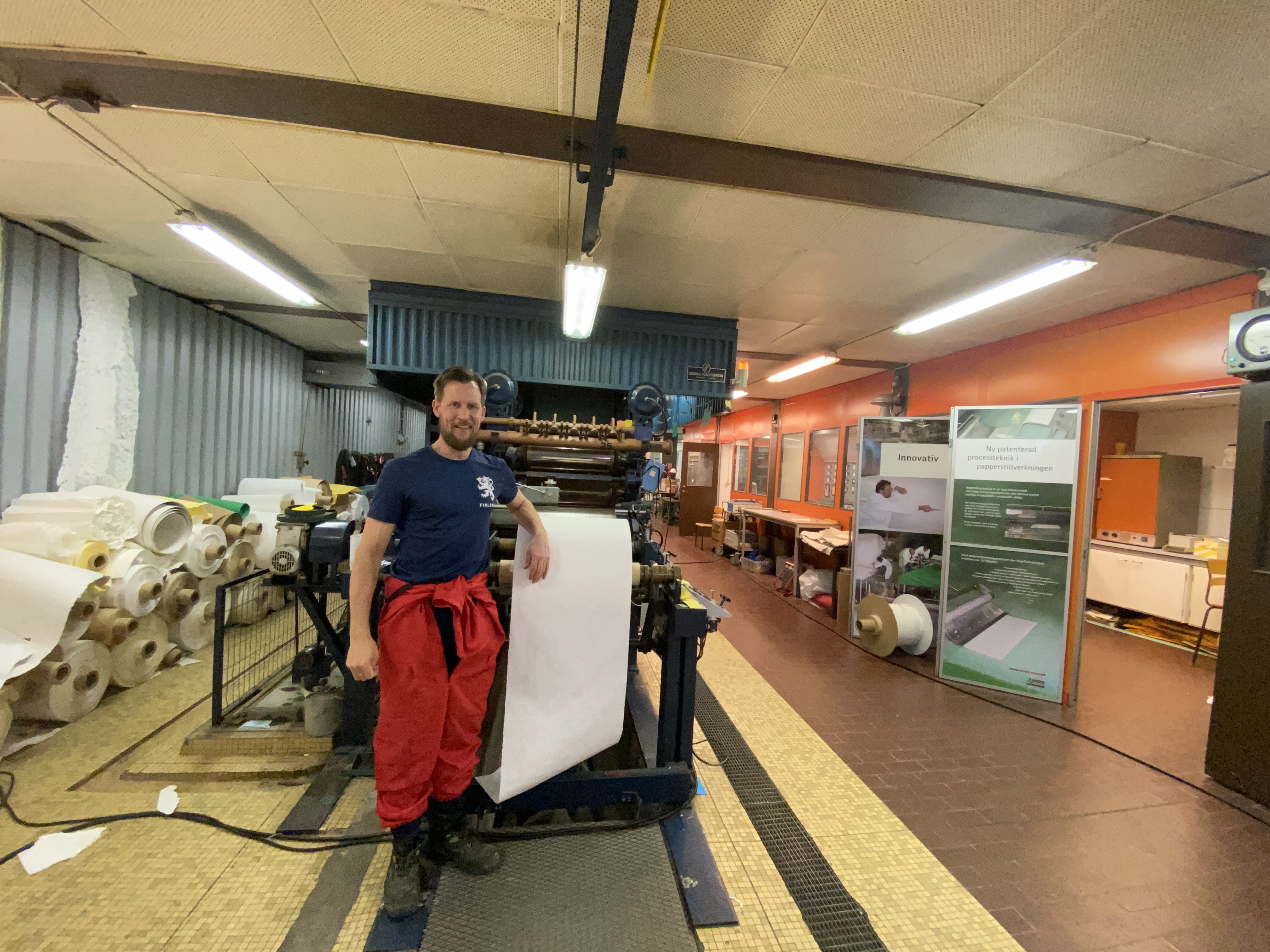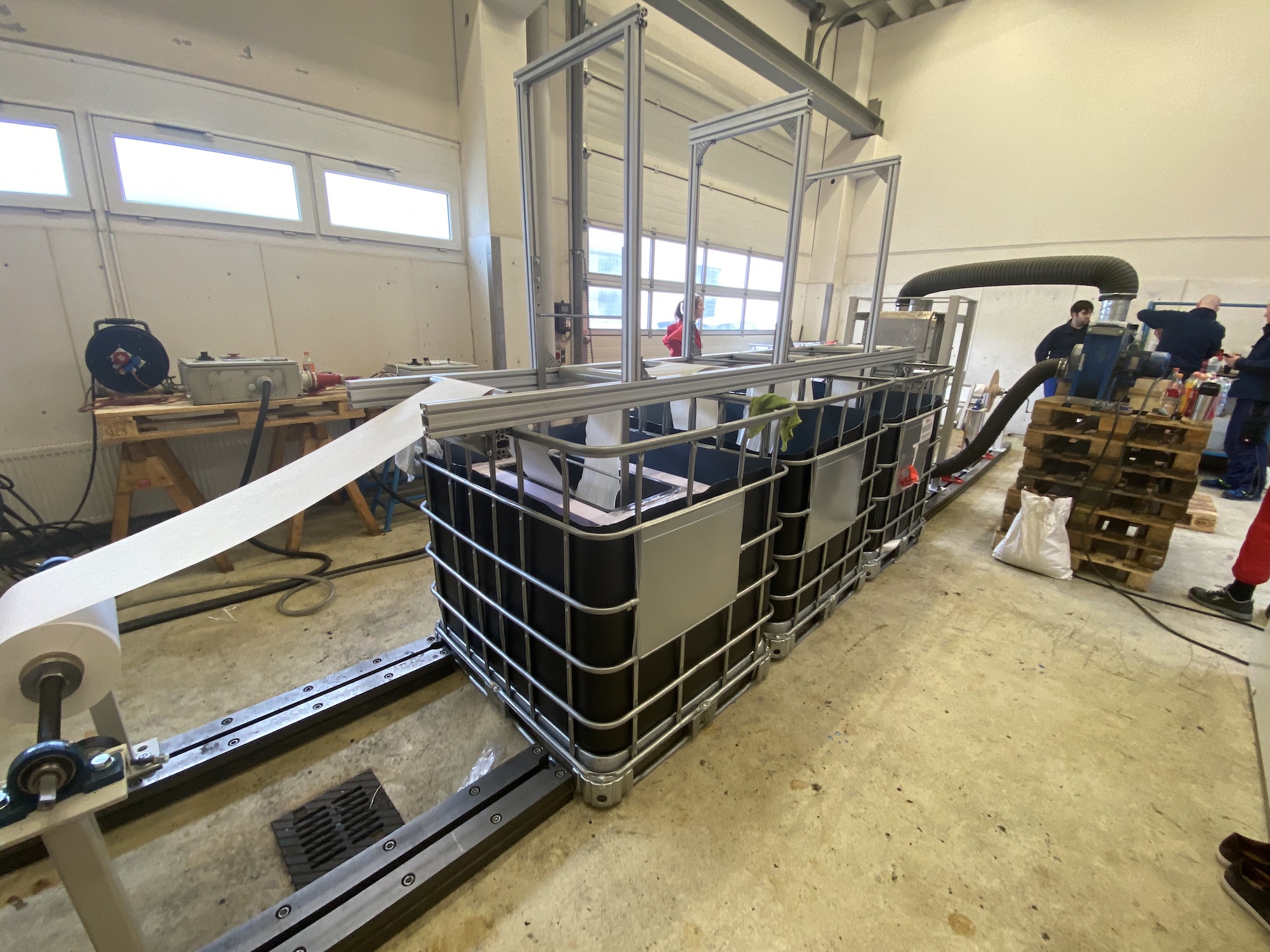Main navigation
PLAFCO – a sustainable plastic substitute made from paper
Plastic is indispensable: it is cheap and practical and found in many disposable products such as drinking straws, disposable tableware or even packaging like bonded beverage cartons or bags – and it has a disastrous effect on the environment. The start-up company Plafco Fibertech Oy has developed a sustainable plastic substitute made of paper that could replace many disposable plastic products in the future – without requiring us to give up the advantages of plastic.
Our daily lives are lived in a world full of plastics: packaging and films of all kinds, disposable tableware and many other products are ubiquitous and have a global annual market value of several billion euros – and the quantities of plastic products are growing considerably. The useful life of these materials that are mostly made of synthetic polymers is usually short, and most plastic production still relies on fossil resources. Products such as drinking straws and disposable tableware made from fossil raw materials will be banned from sale from mid-2021, as they are often disposed of in the environment, where they decompose either partially or not at all, thus harming the environment, water bodies and human and animal health.
The Baden-Württemberg Cooperative State University in Karlsruhe began searching for sustainable alternatives as early as 2013: in an EU project, Prof. Dr. Jukka Valkama, who leads the university’s paper technology degree programme, and his team began researching how to substitute plastic for paper. "We wanted to know if paper could be used as a base material without inventing anything too new," Valkama reports. "And, over the three-year project, we actually managed to develop a new product by converting paper into a composite with comparable properties to plastic."
Paper gains new properties and becomes PLAFCO
The Karlsruhe scientists have named the new, environmentally friendly plastic substitute PLAFCO, short for plasticised fibre composite. Valkama now feels that the name is not quite right: "It is not plastic at all, as the plastic has been replaced by the new fibre composite. But we’ll keep the name now as changing it would cause too much confusion."
PLAFCO is made from raw paper, which is either produced from pulp at the university itself or as large rolls made to order by paper factories following directions that they are given. The actual transformation into a plastic substitute product involves placing the paper into a PLAFCO bath in which chemicals first dissolve part of the cellulose from the natural fibres. The chemicals are subsequently removed by washing, and the dissolved cellulose acts as a glue, automatically filling all accessible gaps in the paper. After drying, the material is then ready for use. "This method transforms paper into a cellulosic composite that is more compressed than paper," the professor explains. "And this gives it completely different properties: it is much stiffer, more uniform and airtight; you can even make it impermeable to oil. This then makes it suitable for food packaging, for example."
Compostable, recyclable and environmentally friendly

Although PLAFCO is similar to paper, it nevertheless boasts comparable properties to plastic and can thus replace many plastic and hybrid products - but with consistently positive results. The advantages of the new material include being fully biodegradable and compostable as well as protecting the environment and not polluting water. In addition, it can be recycled almost indefinitely: "With PLAFCO, we can dock directly onto recycling cycles in the paper industry - i.e. existing systems - and thus achieve an almost maximum recycling rate and excellent added value," says Valkama. "So we have not only developed a promising material, but also a very interesting one for the bioeconomy."
Wood in the form of sawdust or wood processing residues is used as the raw material for producing PLAFCO. "For me, there is nothing more sustainable than wood," says the engineer. He is not keen on annual plants that compete with food production on farms. "In the paper industry, everything is very sustainable; only raw materials from certified forests are used, and this gives us access to huge quantities of pulp. And it all comes with an attractive price tag, which won’t change any time soon. You don’t get that with bioplastic."
Finding investors is difficult
The novel material has already had a hugely positive response, as awards such as the NEO2020 Innovation Award or the Blue Sky Young Researchers Award 2017/18 demonstrate. However, concrete implementation as products is not as easy as it might appear: the original EU project to develop the novel plastic replacement product was undertaken with partners. After a patent application was filed for PLAFCO, the partners were offered the opportunity to further develop the material to take it to market maturity. "Unfortunately, the original partners were not right for the project, none of them were willing to take the risk," reports Valkama. "So I did it on my own. I recruited colleagues and friends who became part of my team and I founded the company Plafco Fibertech Oy. We bought the patent with our own money and started industrialising PLAFCO in 2017."
However, the company still needs a machine for producing the plastic substitute. A pilot machine would cost 2.5 million euros. "But it's a chicken and egg situation: if we could show that a machine of this kind worked, we would get money immediately, but we do not have such a machine, so we cannot do so and are unable to get money," says the scientist and company founder. "It's been the same story every time we’ve tried: you get a long way into the negotiations, but just before you close the deal, the investors decide it’s too risky and back out. But we know we have something good. At the moment, the search for investors is looking quite positive. We are actually close to being able to do something concrete in Baden-Württemberg."
Pilot machine to be installed in Baden-Württemberg

For the time being, Valkama only has a small machine in mind – "picking the low hanging fruit", as he calls it. Actual products that could be produced with this machine already exist. "We have already used PLAFCO to produce drinking straws. They are very stable and easy to produce. We can also produce multi-layer items such as disposable cutlery and tableware. Today’s disposable cutlery and tableware is made of plastic and will be banned throughout the EU from July 2021. So this would be an excellent opportunity to enter the market. We can also produce all kinds of packaging for solid and liquid products, even corrugated cardboard. We can also offer solutions for the medical sector."
The scientist estimates that the small pilot machine would be able to produce around five million kilos of PLAFCO per year. "Larger machines would later be able to produce hundreds of thousands of tons in a four-shift operation," says Valkama, adding: "But this would then be a completely different kettle of fish, we would then be looking at mass production." Valkama continues: "We would like to start with exotic products, which are higher in price but smaller in volume." Valkama estimates it will take six months to build the machine. This could be started at any time, as the design has already been completed by a mechanical engineer. "Every screw is already in place, and we firmly expect to be able to start production somewhere in Baden-Württemberg before the end of the year." Investors would then have no reason to shy away from investing in a larger machine. "By then, we will have shown that the small machine works," concludes the PLAFCO founder.

